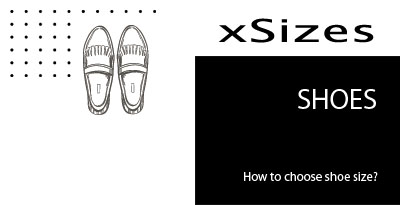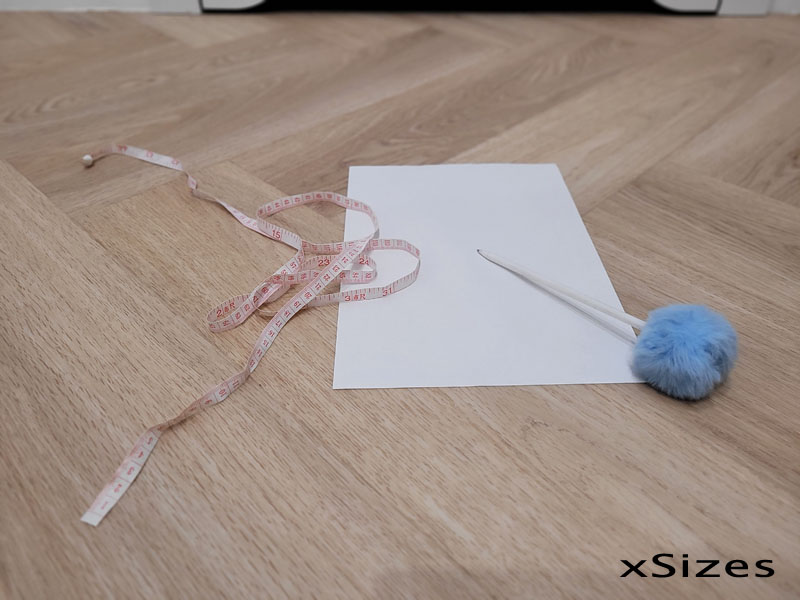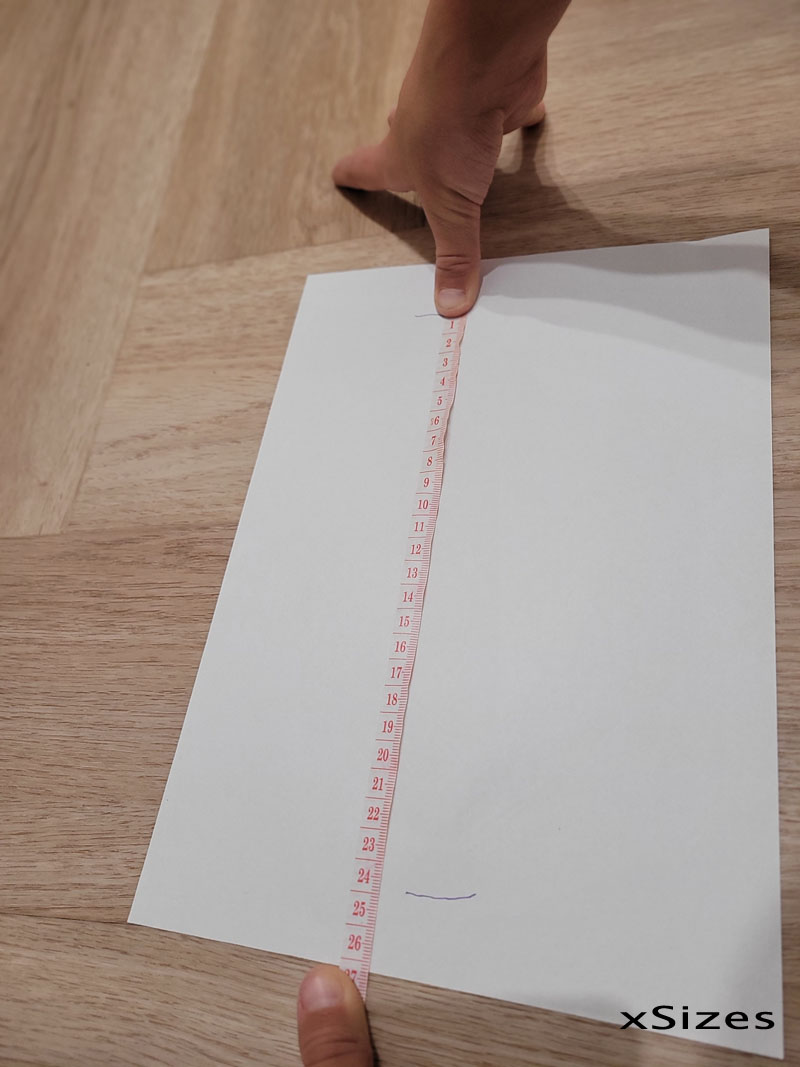Kids shoe size chart

When it comes to buying shoes for kids, it's important to choose the right size to ensure that they are comfortable and well-supported. However, with kids growing so quickly, it can be challenging to keep up with their changing shoe size. That's where a kids shoe size chart comes in handy. A shoe size chart provides a guide to help you choose the appropriate shoe size based on your child's age, foot length, and width. In this article, we will explore the basics of a kids shoe size chart and provide tips on how to measure your child's foot to ensure the best fit. Whether you're shopping for sneakers, sandals, or boots, understanding how to use a shoe size chart can help make the process of buying shoes for your little ones a lot easier.
How to measure a child's foot?
1. Content
In this article you will find such sizes as:How to measure a kids foot?
Sure, here's a detailed text on how to measure a kid's foot:
Measuring a kid's foot is important to ensure that they are wearing shoes that fit properly and are comfortable. Ill-fitting shoes can cause discomfort, blisters, and even lead to injuries. Here are the steps to measure a kid's foot:
Prepare a piece of paper, a pen or pencil, and a measuring tape or ruler.

Have the child stand on the piece of paper with their heel against a wall or other vertical surface.

Use the pen or pencil to mark the longest part of the foot, usually the big toe or the second toe.

Measure the distance between the heel and the marked spot with a measuring tape or ruler. This measurement is the length of the foot.

Repeat the process with the other foot, as the size of the feet can vary.

Use the measurements to determine the appropriate shoe size based on the brand's size chart.
It's important to measure a kid's foot while they are standing as this is when their foot is the longest and widest. It's also recommended to measure their feet at the end of the day as feet tend to swell and become larger throughout the day. When choosing shoes, make sure to leave some wiggle room for the toes, about half an inch, to ensure that the shoes are not too tight.
It's also important to consider the width of the foot when choosing shoes. Some brands offer shoes in different widths, so make sure to check the size chart and choose the appropriate width for the child's foot.
In summary, measuring a kid's foot is a simple process that can ensure they are wearing shoes that fit properly and are comfortable. Take the time to measure both feet and consider the width of the foot when choosing shoes to provide the best fit and support for your child's feet.
Walker shoe size (12-24 Months)
| US | EU | UK | JP | Inches | CM |
|---|---|---|---|---|---|
| 4.5 | 20 | 3.5 JNR | 12 | 4 5/8 | 11.7 |
| 5 | 20 | 4 JNR | 12.5 | 4 3/4 | 12.1 |
| 5.5 | 21 | 4.5 JNR | 13 | 5 | 12.7 |
| 6 | 22 | 5 JNR | 13.5 | 5 1/8 | 13 |
| 6.5 | 22 | 5.5 JNR | 14 | 5 1/4 | 13.3 |
| 7 | 23 | 6 JNR | 14.5 | 5 1/2 | 14 |
What should be kept in mind when choosing a shoe size for a child?
When choosing a shoe size for a child, it's important to keep several things in mind. First and foremost, consider the child's age and how quickly their feet are likely to grow. Kids' feet grow rapidly, so it's recommended to measure their feet regularly to ensure that they are wearing shoes that fit properly. When measuring the child's foot, make sure to measure both feet as one foot may be larger than the other. Additionally, consider the width of the foot when choosing a shoe size. Some brands offer shoes in different widths, so make sure to check the size chart and choose the appropriate width for the child's foot. It's also important to leave some wiggle room for the toes, about half an inch, to ensure that the shoes are not too tight.
Finally, choose shoes that are appropriate for the child's activity level and provide adequate support and flexibility for their growing feet. By keeping these factors in mind, you can help ensure that your child is wearing shoes that fit properly and support their overall foot health.
Toddler shoe size conversions (2-4 Years)
| US | EU | UK | JP | Inches | CM |
|---|---|---|---|---|---|
| 7.5 | 24 | 6.5 JNR | 15 | 5 5/8 | 14.3 |
| 8 | 24 | 7 JNR | 15.5 | 5 3/4 | 14.6 |
| 8.5 | 25 | 7.5 JNR | 15.5 | 6 | 15.2 |
| 9 | 25 | 8 JNR | 16 | 6 1/8 | 15.6 |
| 9.5 | 26 | 8.5 JNR | 16.5 | 6 1/4 | 15.9 |
| 10 | 27 | 9 JNR | 17 | 6 1/2 | 16.5 |
| 10.5 | 27 | 9.5 JNR | 17.5 | 6 5/8 | 16.8 |
| 11 | 28 | 10 JNR | 18 | 6 3/4 | 17.1 |
| 11.5 | 29 | 10.5 JNR | 18.5 | 7 | 17.8 |
| 12 | 30 | 11 JNR | 18.5 | 7 1/8 | 18.1 |
Little Kid shoe size (4-8 Years)
| US | EU | UK | JP | Inches | CM |
|---|---|---|---|---|---|
| 12.5 | 30 | 11.5 JNR | 19 | 7 1/4 | 18.4 |
| 13 | 31 | 12 JNR | 19.5 | 7 1/2 | 19.1 |
| 13.5 | 31 | 12.5 JNR | 20 | 7 5/8 | 19.4 |
| 1 | 32 | 13 JNR | 20.5 | 7 3/4 | 19.7 |
| 1.5 | 33 | 13.5 JNR | 21 | 8 | 20.3 |
| 2 | 33 | 1 | 21.5 | 8 1/8 | 20.6 |
| 2.5 | 34 | 1.5 | 21.5 | 8 1/4 | 21 |
| 3 | 34 | 2 | 22 | 8 1/2 | 21.6 |
Different brand = different shoe size
When it comes to children's shoe sizes, there can be some variation between different brands. To ensure the best fit, it's important to measure the child's foot and compare it to the size chart provided by each brand. Some brands may offer shoes in different widths or with different levels of cushioning or support, so it's important to consider these factors as well.
To compare sizes between different brands, it's helpful to have a conversion chart that lists the equivalent sizes for each brand. These charts can be found online or may be provided by the retailer where you are purchasing the shoes. Keep in mind that these charts are not always 100% accurate, as sizes can vary between individual shoe styles and models.
It's also recommended to read reviews and feedback from other parents or caregivers who have purchased shoes from the brands you are considering. This can provide valuable insight into the fit and sizing of the shoes, as well as any other factors that may be important to consider, such as durability and comfort.
In summary, when comparing shoe sizes between different brands, it's important to measure the child's foot and consult the size chart for each brand. A conversion chart can be helpful for comparing sizes, but it's important to keep in mind that sizes can vary between individual shoe styles and models. Reading reviews and feedback from other parents or caregivers can also provide valuable insight into the fit and sizing of the shoes.
Youth shoe size chart
| US - Kids | 1C | 2C | 3C | 4C | 5C | 6C | 7C | 8C | 9C | 10C | 10.5C | 11C | 11.5C | 12C | 12.5C | 13C | 13.5C | 1Y | 1.5Y | 2Y | 2.5Y | 3Y | 3.5Y | 4Y | 4.5Y | 5Y | 5.5Y | 6Y | 6.5Y | 7Y | UK | 0.5 | 1.5 | 2.5 | 3.5 | 4.5 | 5.5 | 6.5 | 7.5 | 8.5 | 9.5 | 10 | 10.5 | 11 | 11.5 | 12 | 12.5 | 13 | 13.5 | 1 | 1.5 | 2 | 2.5 | 3 | 3.5 | 4 | 4.5 | 5 | 5.5 | 6 | 6 |
|---|---|---|---|---|---|---|---|---|---|---|---|---|---|---|---|---|---|---|---|---|---|---|---|---|---|---|---|---|---|---|
| CM | 7 | 8 | 9 | 10 | 11 | 12 | 13 | 14 | 15 | 16 | 16.5 | 17 | 17.5 | 18 | 18.5 | 19 | 19.5 | 20 | 20.5 | 21 | 21.5 | 22 | 22.5 | 23 | 23.5 | 23.5 | 24 | 24 | 24.5 | 25 |
| EU | 16 | 17 | 18.5 | 19.5 | 21 | 22 | 23.5 | 25 | 26 | 27 | 27.5 | 28 | 28.5 | 29.5 | 30 | 31 | 31.5 | 32 | 33 | 33.5 | 34 | 35 | 35.5 | 36 | 36.5 | 37.5 | 38 | 38.5 | 39 | 40 |
How to Size Baby Shoes?
Choosing the right size of baby shoes is important to ensure that your little one's feet are comfortable and well-supported. To size baby shoes, it's recommended to measure their feet regularly, as their feet grow quickly in the first few years of life. You can measure your baby's foot by tracing it on a piece of paper and measuring the distance between the heel and the longest toe. It's important to leave some wiggle room for the toes, about half an inch, to ensure that the shoes are not too tight. When choosing shoes, make sure to consider the width of the foot as well, as some brands offer shoes in different widths. It's also recommended to choose shoes with a soft sole that allows for natural foot movement and flexibility. By choosing the right size and style of baby shoes, you can help support your baby's growing feet and ensure that they are comfortable and happy.
Baby shoes size chart in Age
| Baby Shoe Size (US) | Foot Length (Inches) | Age |
|---|---|---|
| 1 | 3.5" | Newborn |
| 2 | 3.75" | Newborn |
| 2.5 | 4.0" | 3-6 Months |
| 3 | 4.125" | 3-6 Months |
| 4 | 4.5" | 6-12 Months |
| 5.5 | 5.0" | 12-18 Months |
| 6.5 | 5.25" | 18-24 Months |
| 8 | 5.75" | 2-3 Years |
| 9.5 | 6.25" | 3-4 Years |
Do not make these mistakes when choosing shoes for your baby:
-
Guessing the size: One of the most common mistakes parents make is guessing their child's shoe size. It's important to measure the child's foot to ensure the best fit.
-
Ignoring foot width: Shoe sizes are not just about length, but also about width. Make sure to choose a shoe that fits the width of your child's foot, as shoes that are too narrow or too wide can cause discomfort and even lead to foot problems.
-
Buying shoes that are too big: While it may be tempting to buy shoes that your child can "grow into," shoes that are too big can be uncomfortable and may not provide adequate support. It's important to choose shoes that fit properly, leaving some wiggle room for the toes.
-
Choosing the wrong type of shoe: Different types of shoes are designed for different activities and foot shapes. For example, running shoes may have more cushioning and support, while sandals may have less. Make sure to choose the appropriate type of shoe for your child's needs.
-
Not considering the season: The type of shoe your child wears should also be appropriate for the season. Boots may be necessary in the winter, while sandals are more suitable for the summer months.
By avoiding these common mistakes, you can help ensure that your child is wearing shoes that fit properly and support their overall foot health.
Kids' Standard Width Equivalents
When it comes to buying shoes for kids, it's important to consider the width of their feet as well as the length. While shoe sizes are generally standardized by length, there can be variation in width between different brands and styles. Here are some standard width equivalents to keep in mind when shopping for kids' shoes:
-
Narrow: Narrow shoes are typically labeled as "N" or "AA" and are designed for feet that are slimmer than average. If your child has narrow feet, look for shoes that are labeled as narrow or have a narrower cut.
-
Medium: Medium or standard width shoes are typically labeled as "M" or "B" and are designed for feet that are of average width. Most children will fit into medium width shoes, so this is often the default option.
-
Wide: Wide shoes are typically labeled as "W" or "D" and are designed for feet that are wider than average. If your child has wider feet, look for shoes that are labeled as wide or have a wider cut.
It's important to note that not all brands or styles will offer shoes in all width sizes. Additionally, the fit can vary even within the same brand and style, so it's important to try on shoes before purchasing whenever possible. If you're unsure about the width of your child's foot or have any concerns about their shoe fit, it's always a good idea to consult with a pediatrician or podiatrist for personalized advice.
Q&A Module
-
What is a kids shoe size chart?
A kids shoe size chart is a chart that provides a range of sizes for children's shoes based on their age, foot length, and width. It can be used as a reference to help parents and caregivers find the appropriate shoe size for their child. -
How do I measure my child's foot for the shoe size chart?
To measure your child's foot, place it on a piece of paper and trace around it. Measure the distance between the heel and the longest toe, and then use a kids shoe size chart to determine the appropriate size. It's important to measure both feet, as they may not be exactly the same size. -
Are all kids shoe sizes the same across brands?
No, kids shoe sizes can vary between brands and even between different styles within the same brand. It's important to use a kids shoe size chart as a reference, but also to try on shoes before purchasing whenever possible. -
What if my child's foot falls between two sizes on the shoe size chart?
If your child's foot falls between two sizes on the shoe size chart, it's generally recommended to choose the larger size to ensure that there is enough room for growth and comfort. However, it's also important to consider the width of the shoe and to try on shoes before purchasing whenever possible.




